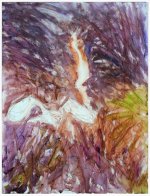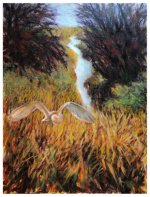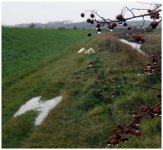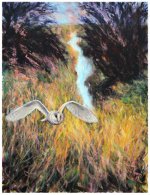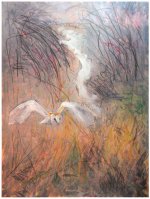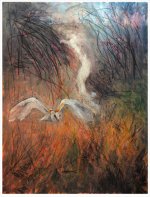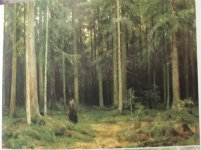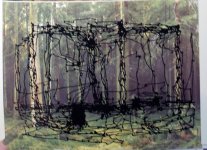Strandman
Well-known member
hello all
back to the Barn Owl project for a little bit this weekend
its going alright, but I've covered up a bit too much of the underpainting and settled into a slightly comfy and predictable colour scheme
so I'm tempted to rough it up a little before finishing off the owl
as an aside, photo attached of a perfect puddle to match a flying Barn Owl: the real owl never quite strayed into line with it as it worked along the ditch, so I digi'd it in to record the possibility, if not the true moment
back to the Barn Owl project for a little bit this weekend
its going alright, but I've covered up a bit too much of the underpainting and settled into a slightly comfy and predictable colour scheme
so I'm tempted to rough it up a little before finishing off the owl
as an aside, photo attached of a perfect puddle to match a flying Barn Owl: the real owl never quite strayed into line with it as it worked along the ditch, so I digi'd it in to record the possibility, if not the true moment




